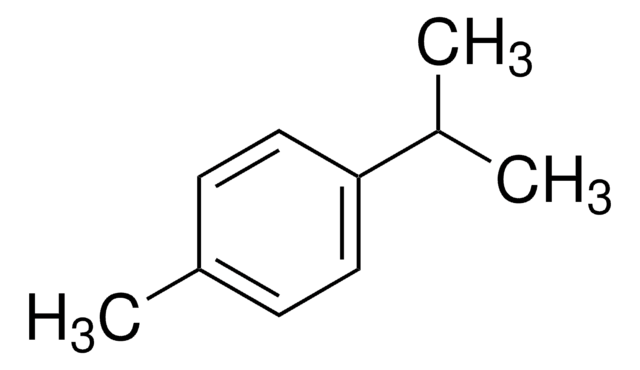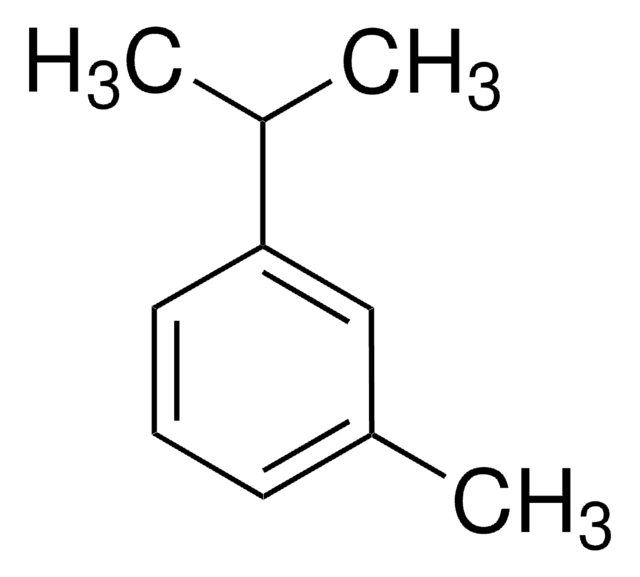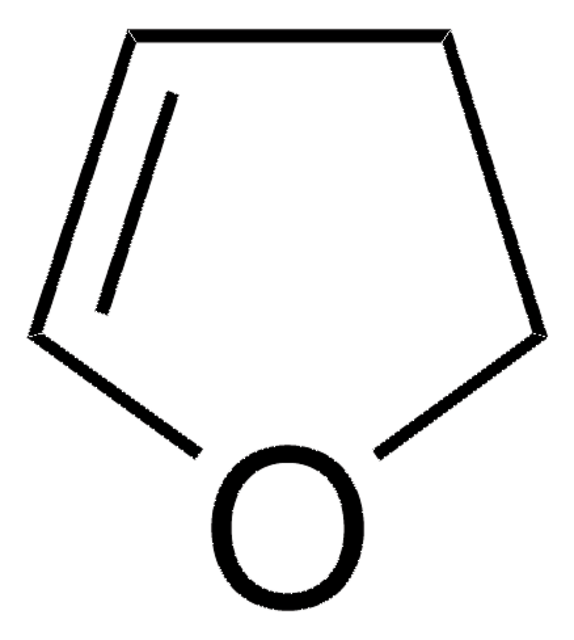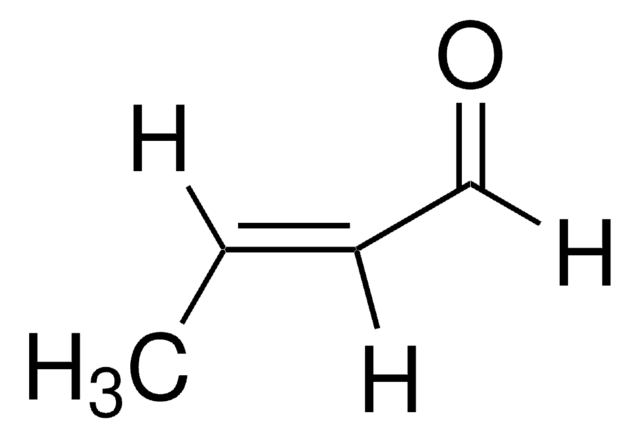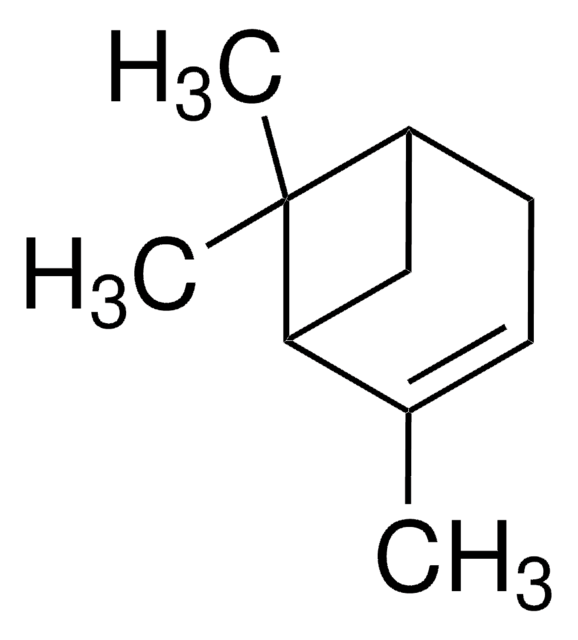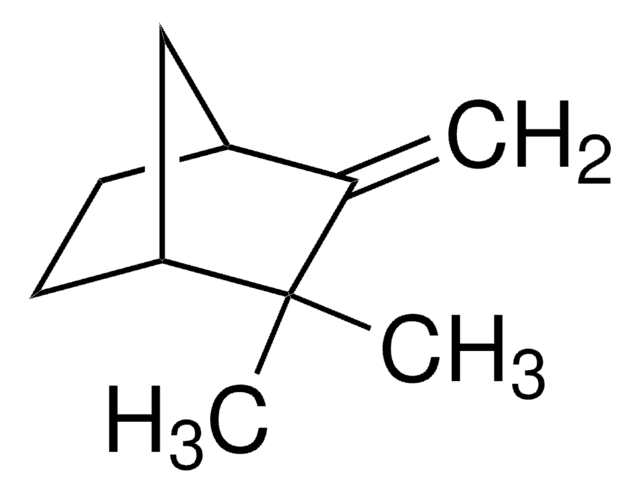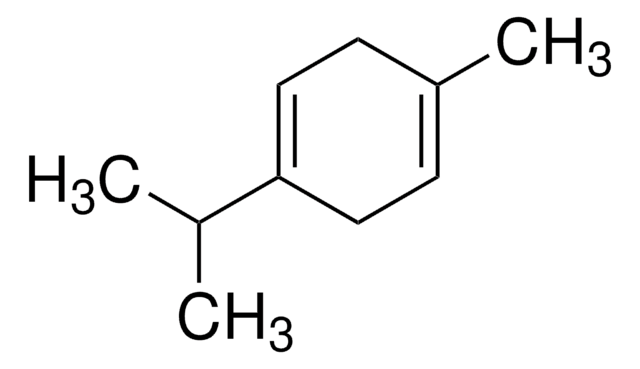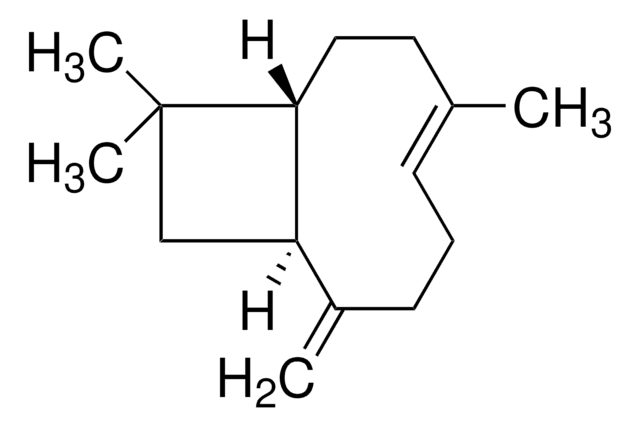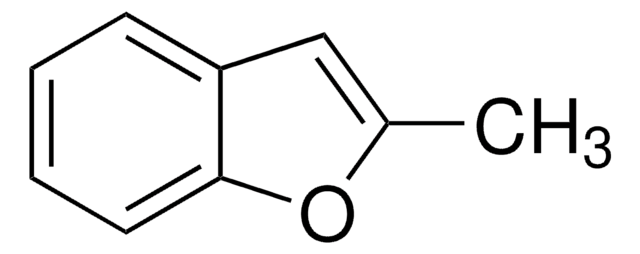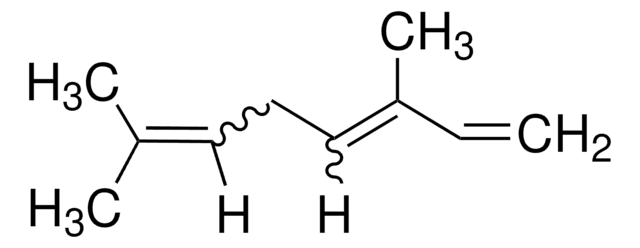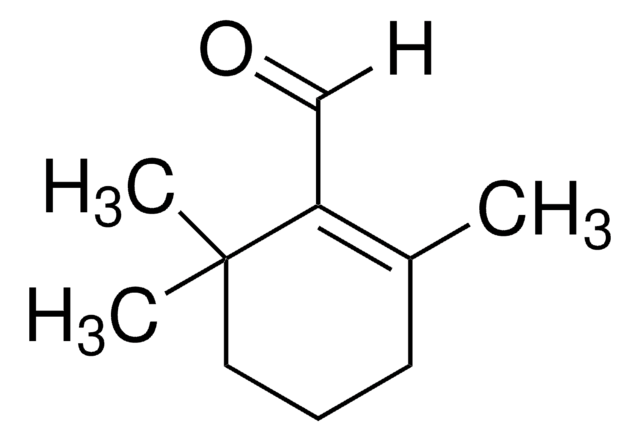Kluczowe dokumenty
255270
o-Cymene
98%
Synonim(y):
1-Isopropyl-2-methylbenzene, 2-Isopropyltoluene
About This Item
Polecane produkty
ciśnienie pary
3.6 mmHg ( 37.7 °C)
Poziom jakości
Próba
98%
Formularz
liquid
współczynnik refrakcji
n20/D 1.499 (lit.)
bp
178 °C (lit.)
mp
−72-−71 °C (lit.)
rozpuszczalność
organic solvents: miscible(lit.)
water: insoluble(lit.)
gęstość
0.877 g/mL at 25 °C (lit.)
ciąg SMILES
CC(C)c1ccccc1C
InChI
1S/C10H14/c1-8(2)10-7-5-4-6-9(10)3/h4-8H,1-3H3
Klucz InChI
WWRCMNKATXZARA-UHFFFAOYSA-N
Szukasz podobnych produktów? Odwiedź Przewodnik dotyczący porównywania produktów
Powiązane kategorie
Opis ogólny
Zastosowanie
- Mechanism of β–cyclodextrin-thyme nanocomplex formation and release: Explores the encapsulation and release mechanisms of o-Cymene in nanocomplexes, suggesting its potential applications in food industry innovations (Dorofte et al., 2024).
- Processing of sapodilla (Manilkara zapota L.) fruit: Reports the use of o-Cymene in improving the shelf life of sapodilla fruit, illustrating its role in food preservation and post-harvest loss control (Kumar et al., 2024).
- Comparative Study on Insecticidal Activities of Essential Oils: Highlights the effectiveness of o-Cymene in essential oil formulations used as insecticides, providing insights into its use in sustainable pest management (Awojide et al., 2023).
- Chemical composition of essential oil from Lindera caesia: Examines the antifungal and antibiofilm properties of o-Cymene in essential oils, suggesting potential applications in healthcare, especially in dental caries prevention (Zaini et al., 2023).
wyposażenie dodatkowe
Hasło ostrzegawcze
Warning
Zwroty wskazujące rodzaj zagrożenia
Zwroty wskazujące środki ostrożności
Klasyfikacja zagrożeń
Flam. Liq. 3
Kod klasy składowania
3 - Flammable liquids
Klasa zagrożenia wodnego (WGK)
WGK 2
Temperatura zapłonu (°F)
122.0 °F - closed cup
Temperatura zapłonu (°C)
50 °C - closed cup
Środki ochrony indywidualnej
Eyeshields, Faceshields, Gloves, type ABEK (EN14387) respirator filter
Wybierz jedną z najnowszych wersji:
Masz już ten produkt?
Dokumenty związane z niedawno zakupionymi produktami zostały zamieszczone w Bibliotece dokumentów.
Klienci oglądali również te produkty
Global Trade Item Number
| SKU | GTIN |
|---|---|
| 255270-25MG | |
| 255270-100MG | 4061826004630 |
| 255270-500MG | 4061837704086 |
Nasz zespół naukowców ma doświadczenie we wszystkich obszarach badań, w tym w naukach przyrodniczych, materiałoznawstwie, syntezie chemicznej, chromatografii, analityce i wielu innych dziedzinach.
Skontaktuj się z zespołem ds. pomocy technicznej